Introduction
Specimen Studies
0.1.1 | 0.1.2 | 0.1.3 | 0.1.4 | 0.1.5Methods
0.2.1 | 0.2.2The Structure of this Dissertation
0.3.1Tuberculosis' Visual Culture
Visual Practices in Medical Culture
1.1.1 | 1.1.2 | 1.1.3Seeing and Settling in the Sanatorium Movement
1.2.1 | 1.2.2 | 1.2.3 | 1.2.4 | 1.2.5Teaching Public Health
1.3.1 | 1.3.2 | 1.3.3 | 1.3.4 | 1.3.5Representing Doctors in Tuberculous Contexts
1.4.1 | 1.4.2Using Human Specimens in the Study of Tuberculosis
Seeing Disease in Methyl Violet
2.1.1 | 2.1.2 | 2.1.3 | 2.1.4Case Histories
2.2.1 | 2.2.2 | 2.2.3 | 2.2.4Visceral Processes
2.3.1 | 2.3.2Relation
2.4.1 | 2.4.2 | 2.4.3Arts-Based Inquiry
Introduction
3.1.1 | 3.1.2 | 3.1.3 | 3.1.4Terminal Imaginaries & Tuberculous Imaginaries
3.2.1 | 3.2.2 | 3.2.3 | 3.2.4 | 3.2.5 | 3.2.6Dermographic Opacities
3.3.1 | 3.3.2 | 3.3.3 | 3.3.4Tactical Pretensions
3.4.1 | 3.4.2 | 3.4.3Designing Opacity
A Shift towards the Anticolonial
4.1.1 | 4.1.2 | 4.1.3 | 4.1.4Refusals and Opacities
4.2.1 | 4.2.2 | 4.2.3 | 4.2.4Digital and Ethical Workflows
4.3.1 | 4.3.2 | 4.3.3 | 4.3.4 | 4.3.5Conclusion
4.4.1Coda
Prometheus Undone
5.1.1 | 5.1.2 | 5.1.3 | 5.1.4Appendix
The Tuberculosis Corpus
X.1.1 | X.1.2 | X.1.3Web Design
X.2.1 | X.2.2 | X.2.3 | X.2.4Installation Materials
X.3.1 | X.3.2 | X.3.3Index
While the opacity functionality affords the ability to swap between images, most of the opacity work is done before uploading. During the IDAH Summer Incubator, Xavier Daniels and I developed a few workflows early on. We codified some specific methods, which are found in the appendix (X.1.4), but most simply we determined that the process was to use the polygonal lasso tool in Adobe Photoshop, and eventually GIMP,1 to cut away parts of images that were violating the subject’s right to privacy. More specifically these guidelines were as follows:
- For transparent (or non-opaque) images and text, there is no filtering whatsoever. It is just as I have written them or as they appear in the primary document.
- For partially opaque images and text, information is erased in such a way as to protect the privacy of the patient, but this method keeps the scientific information gleaned from the research subject intact. This corresponds with contemporary norms regarding privacy.
- Finally, for fully opaque images and text, it is assumed that research subject probably did not consent in the first place and erases indexes of the body (direct or indirect) from the primary evidence (2.2.2).2
The creation of these images, and the files associated with them requires some more rote and specific labor. Every image in the tuberculosis image dataset (X.1.3) is marked with an identifier (X.1.4), which corresponds to the book it is found in and the page in the original .pdf file (0.2.1).3 The file would be named:4
[Author’sLastName]_[PublicationTitle]_[YearPublished] [Page].pdf.
The images were originally extracted from the source .pdf as separate files with these file names. Each file would need to be cropped, sometimes multiple times depending on whether there were multiple images, in photoshop or GIMP to correspond to web—1500px on its greatest dimension—and exported again with the same filename except with a .jpg extension. Additional versions with slightly different file names—the “_partial” and “_full” appended to these files denoted the type of image that they were—would be exported with the same parameters.5
Maintaining this detailed naming convention means that the files which were used for the site have enough of a regular structure to be easily coded around. While writing, whenever I needed to add an image I wrote the following block of text, using the identifier for the image:6
<img id="[ImageIdentifier]" class="opaque" src="/diss/assets/img/[ImageIdentifier]_full.jpg">
<img id="[ImageIdentifier]" class="transparent" src="/diss/assets/img/[ImageIdentifier].jpg">
<img id="[ImageIdentifier]" class="partially-opaque" src="/diss/assets/img/[ImageIdentifier]_partial.jpg">
From this, I used a batch replace python script, or just a find and replace action in my code editor7 to add in the images (X.2.4).8
I detail this to show my work, but also to convey that this work is labor and time intensive. I would love to do a fully opaque collection of materials, but that is beyond the resources I have. I only had time to make the few dozen images which are used in the dissertation available in this opaque fashion.
Importantly, too, this kind of hands-on work can be reflective. Generating images with a set of guidelines is less thought intensive, and allows my mind to wander: to think around the images in ways that help me intuitively understand them. This opacity practice runs in parallel to the work I described in the previous chapter, and was a method that I began to develop when editing images for “Dermographic Opacities” (3.3.3).9
I can speak to the value of this structured practice, as it is adjacent to close reading. Gazing intently at the figures in frame, but in a gesture that is not peering into the image, so much as looking upon its surface, and then, through the erasure of parts of the image, producing more surface.10 This practice creates a unique relationship between researcher and subject. I am not trying to glean more from the image, nor am I trying to excavate it; instead, I am touching it, altering it, caring for it, in this oblique way.
Tina Campt has written about the accidentally affective registers that occur when closely working in an archive, detailing an embodied approach to carceral albums. Thinking in the haptic, which registers connection in feeling, she articulates how touching an archive’s objects, moving between ledgers in the archive, and reflecting on their historical and representative weight can channel different relationships and understandings of historical imagery. She writes,
As I wheeled myself on a rolling chair from one table to the next to connect each black or brown face with the compromised details of an identity assigned to him through the categories of the ledgers, this haptic encounter forced me to encounter them through a different sensory modality in an attempt to resist the silencing effects of the serial bureaucratic grammar of the archive. It forced me to attend to the quiet frequencies of austere images that reverberate between images, statistical data, and state practices of social regulation.11
An embodied relationship with the representative object fosters potential affective readings. While images are material things,12 academic approaches to reading these objects tend to be in a manner that keeps them separate and distanced from us. Doodling on a Rembrandt would be sacrilege, and these objects are assumed a kind of fixity which ignores the various transformations, cultural shifts, and disciplinary readers who have engaged with those materials.13
Putting one’s hands on a research object changes a researcher’s relationship to it, producing, for Campt, an affective one, which is bounded by the embodied, intersectional experience of the individual doing the touching. Ending her chapter on carceral photographs with an anecdote of her husband, who accompanied her one day in the archive, she describes how his understanding of the images was shifted through touch. Looking at a photograph of her husband’s hands framing a convict, “Meyer Gluckman”, she writes,
He was struck by the resemblance between his hands and Meyer’s and, more specifically, the lack of resemblance that might still be randomly deployed to classify them both as Jews or “Hebrews” in the idiom of the ledgers. His hands were a link to the arbitrary radicalization of a mere show of hands. As he described it, his Jewish hands cradle Meyer’s Jewish hands. This image juxtaposes the hands of a Jewish craftsman against the hands of a Jewish criminal. Through this truly touching image and the hands that frame it, the convict album is transformed into what it sought to distance itself from all along: the family album.14
While the opacity filter is built with a certain opaque protocol in mind, much of the actual work of blacking out the bodies of patients is surprisingly subjective. The boundaries of the pixilated bodies—those bodies produced by the algorithmic transformation from book to digital scan (.pdf) and from that .pdf to a compressed .jpg—can be hard to discern. Every opaque image is not just the result of a process of obfuscation; it is also a considered reflection about the bodies captured in the image.
I want to, quickly, look at one image I used in the first chapter (fig. 1) (1.3.1). This is one of my favorite images in this project. I used it to describe the ways hospitals ran dispensaries and public health programs for patients with tuberculosis. I want to look at a few details from the image to describe the kind of fuzziness at play in the opacity process.
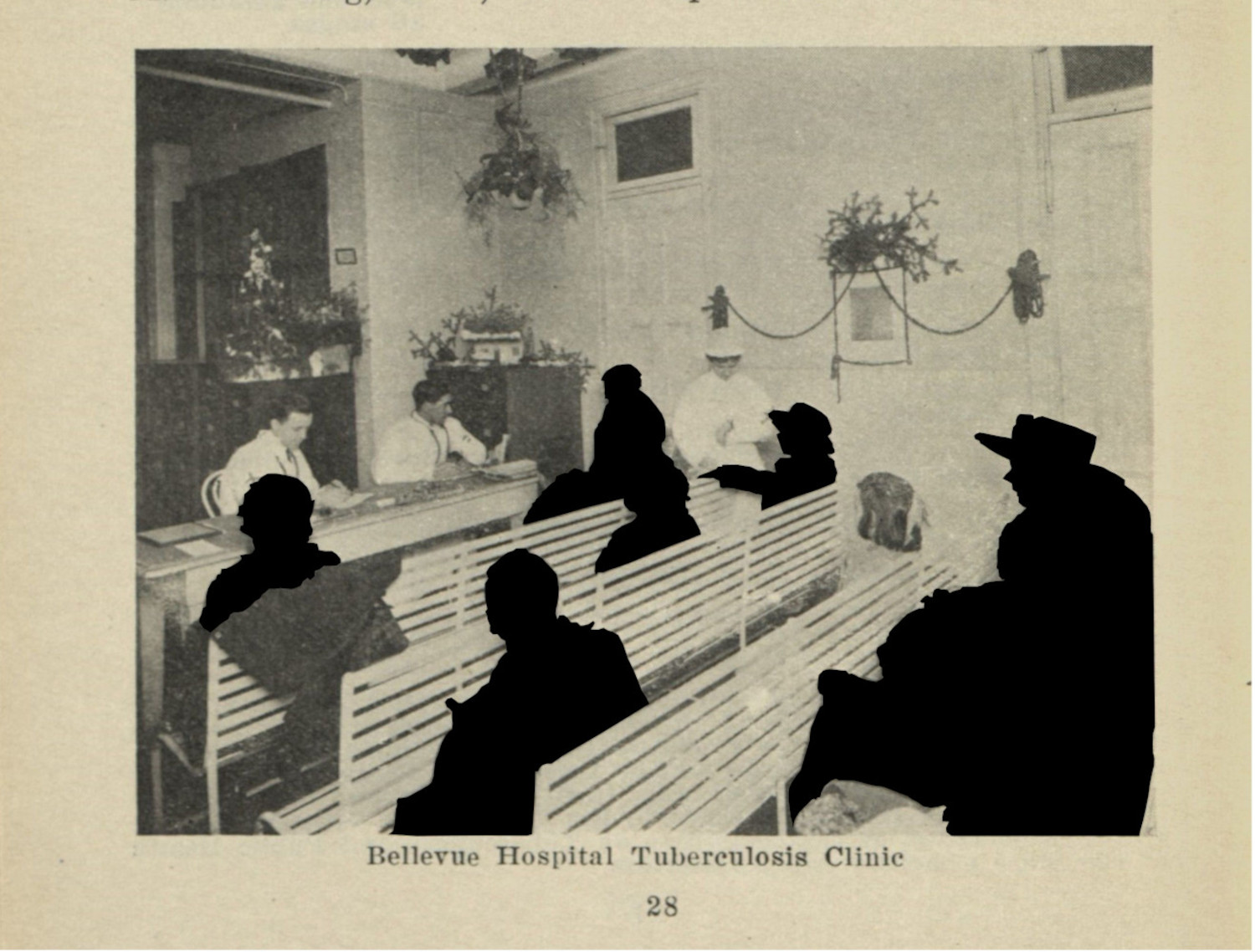
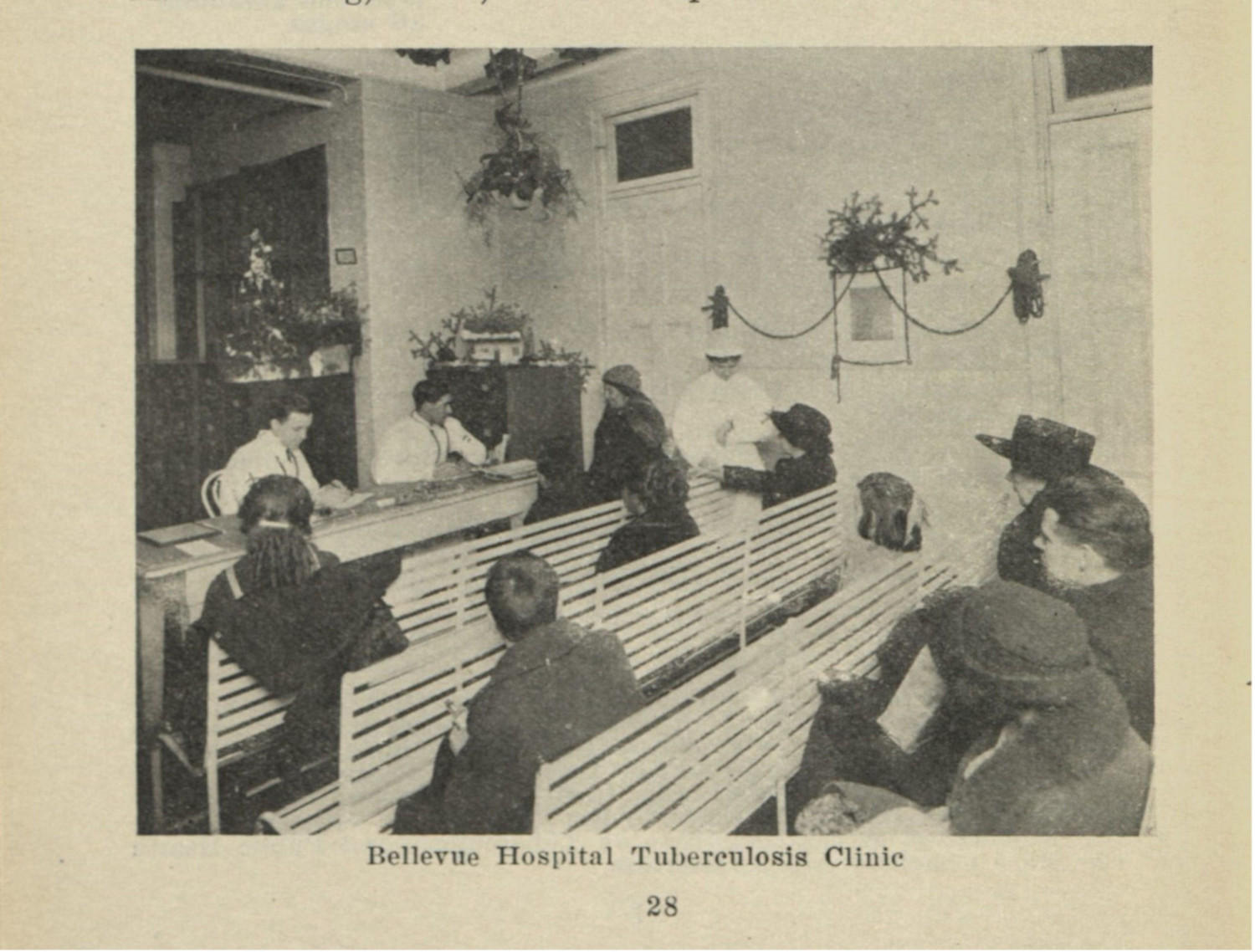
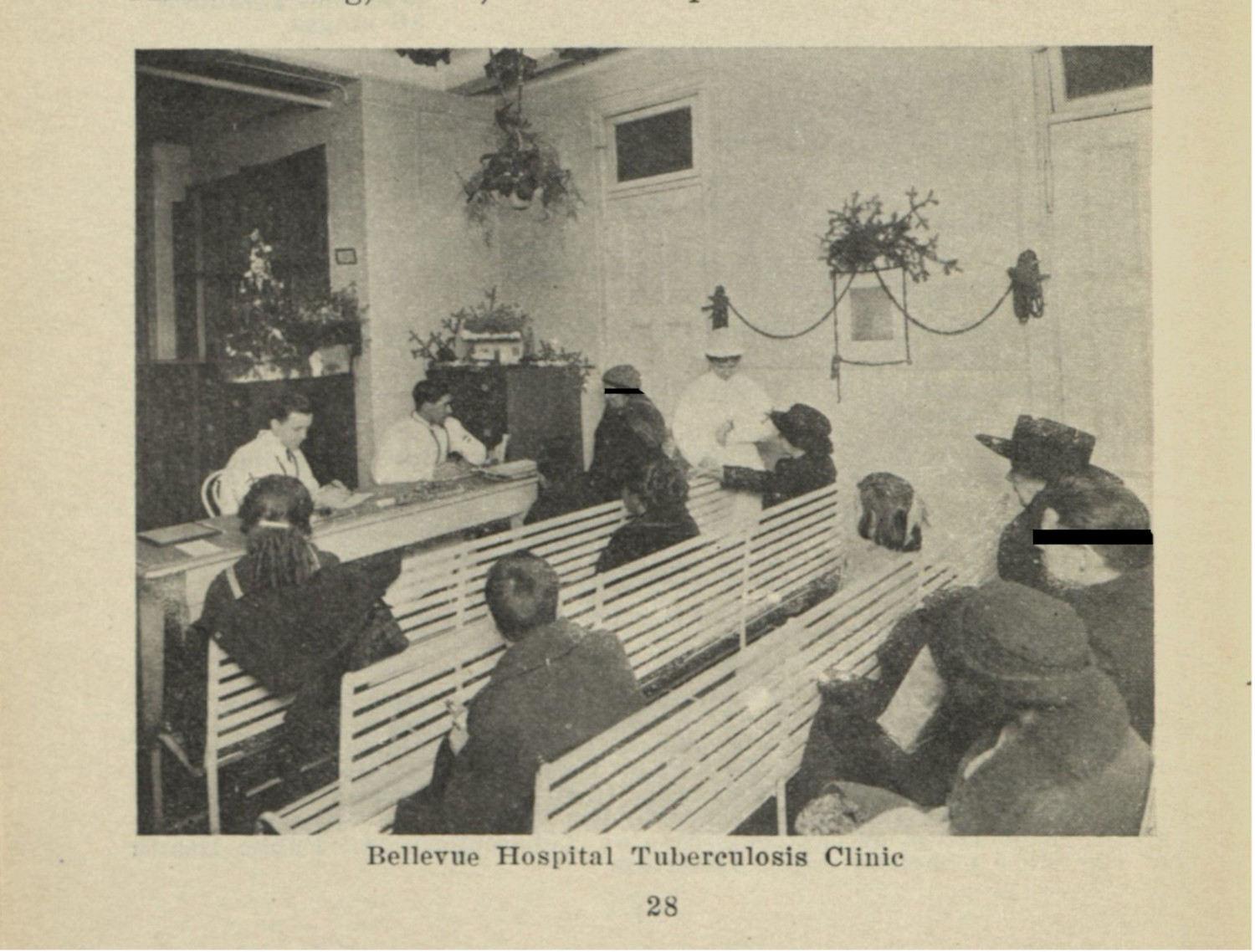
Looking to a smaller section of the image, where four women can be seen seated around one another, I want to first discuss how the nurse inhabits the space (fig. 2). Her face is down, and while there might be a reading where she is doing something with the woman seated on the right, I like to think she is examining her watch, hoping to be off her shift in the clinic (fig. 3). I find this charming mainly because of this candid moment, and because of this moment it appears to be a bit more honest. As I argued in chapter one, these images feel so much like publicity campaigns, that even the seemingly candid moments feel structured and composed (1.2.3; 1.4.1). It brings me joy to see something so mundane.

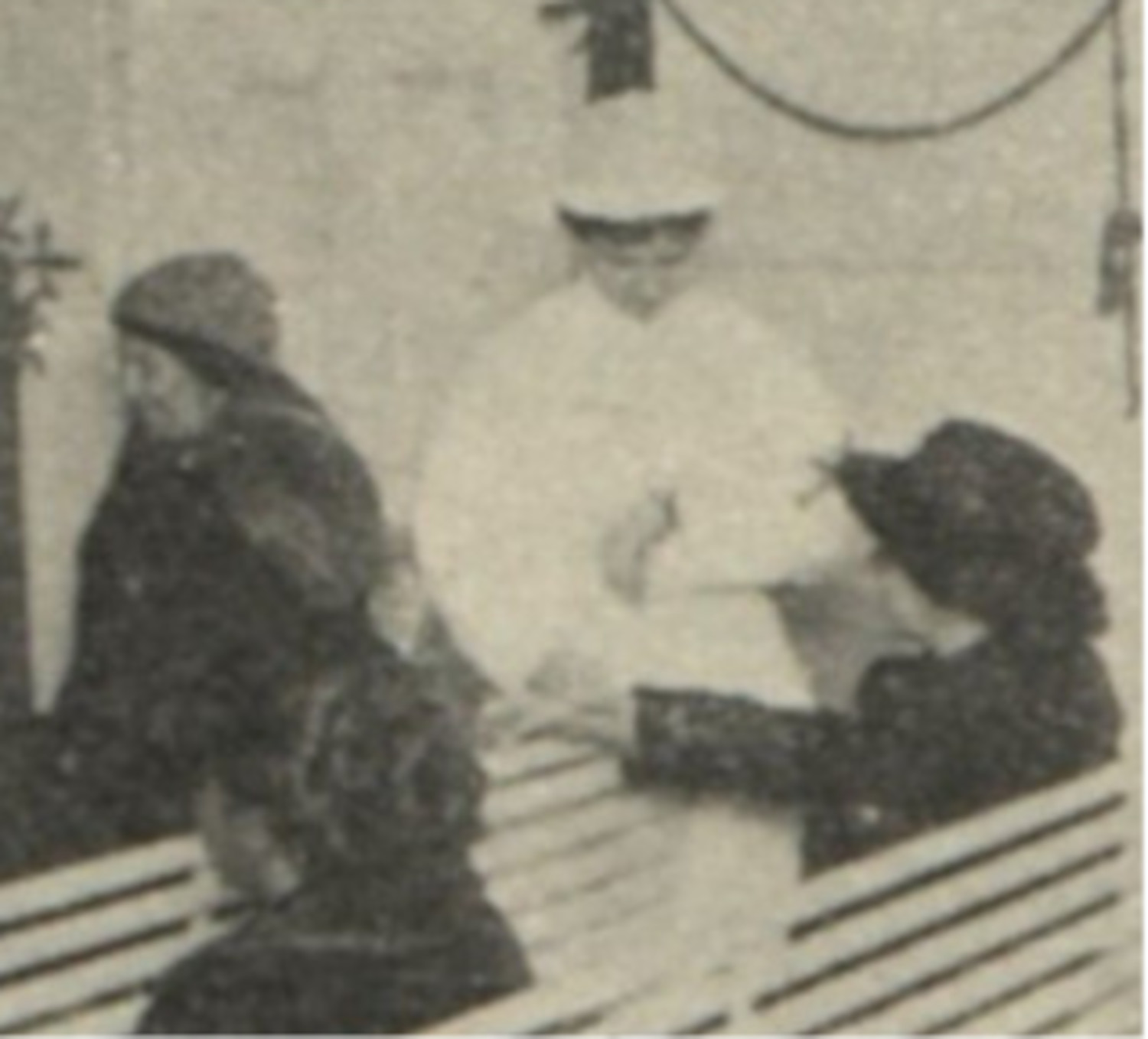
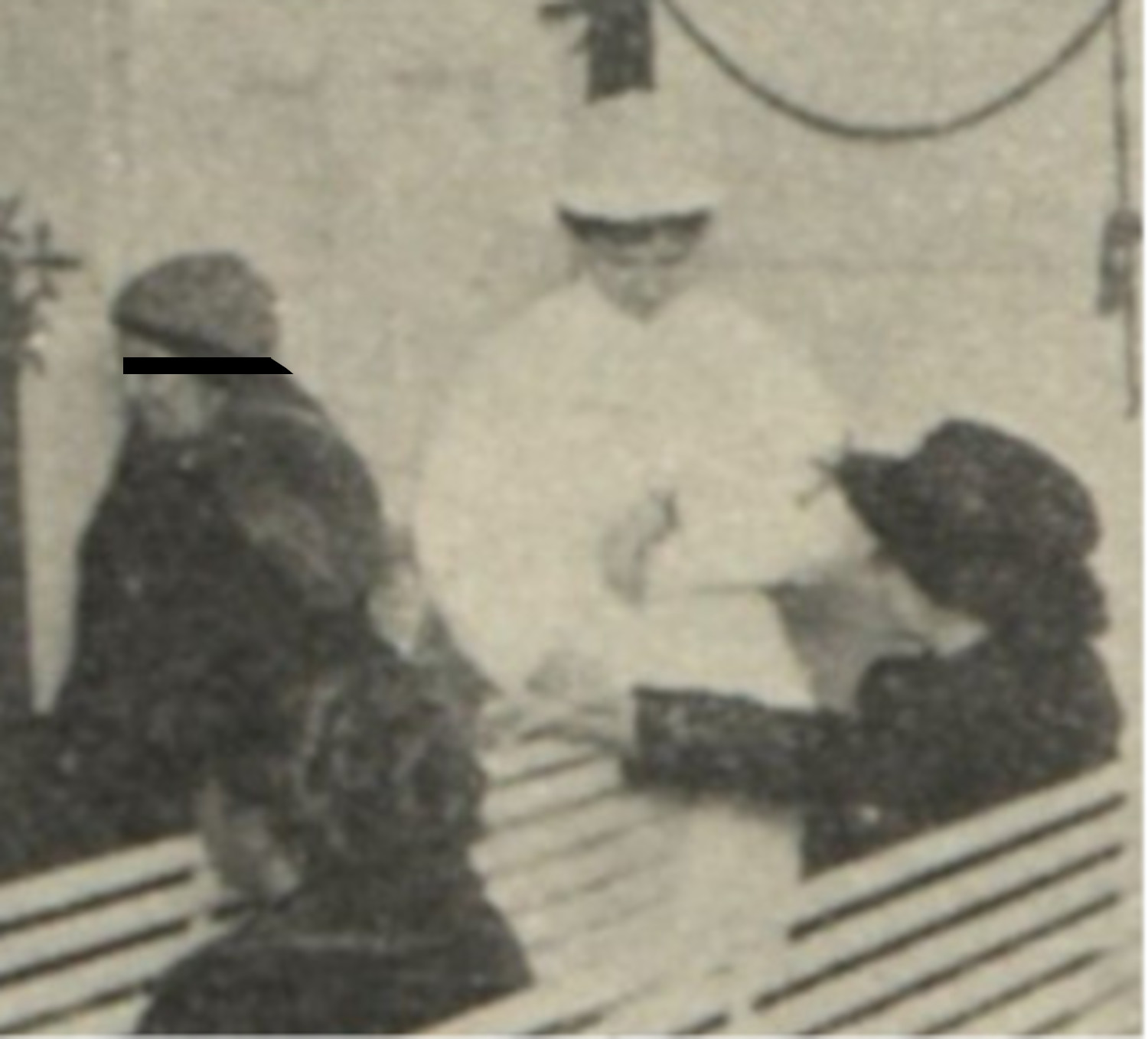
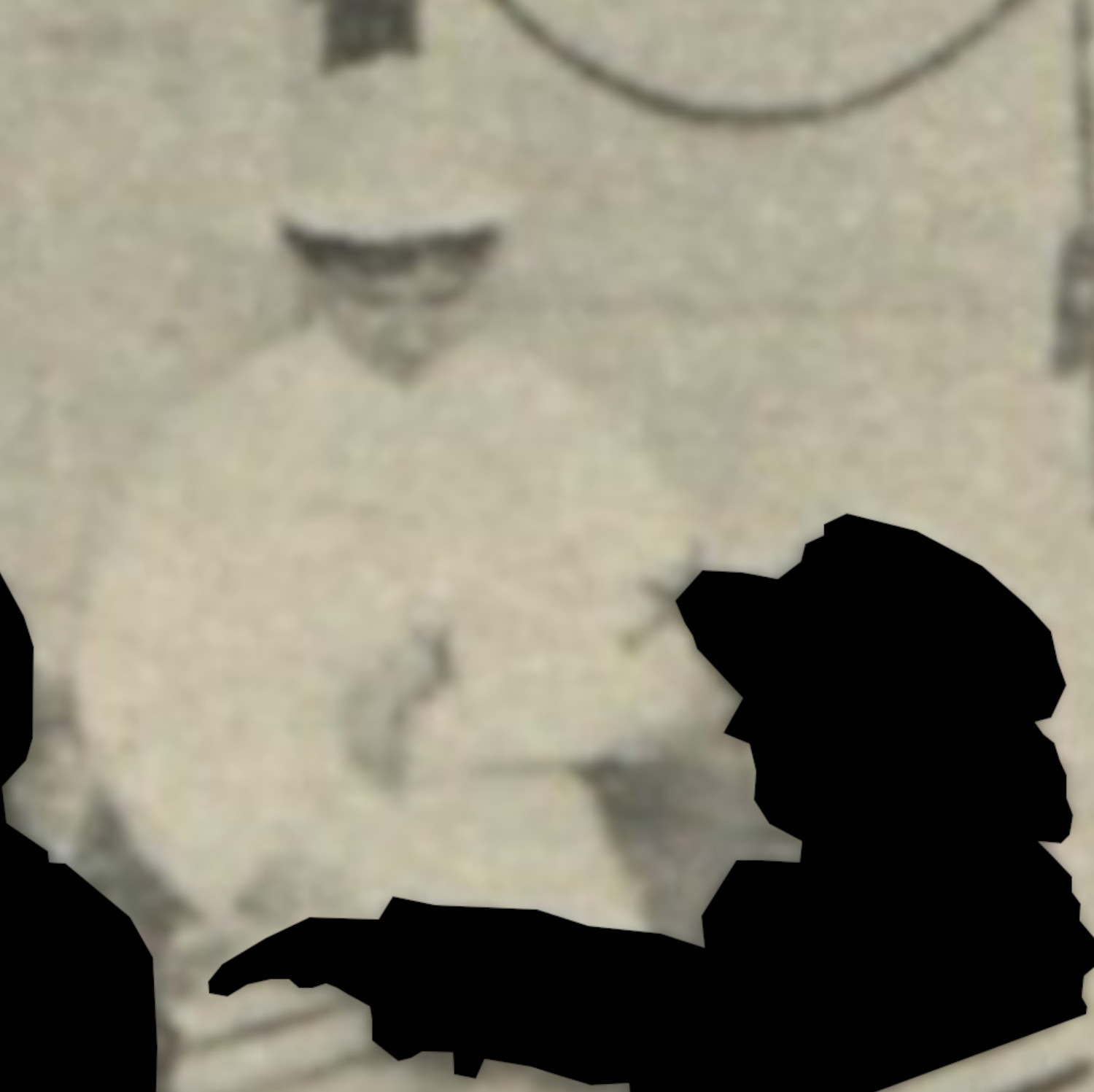
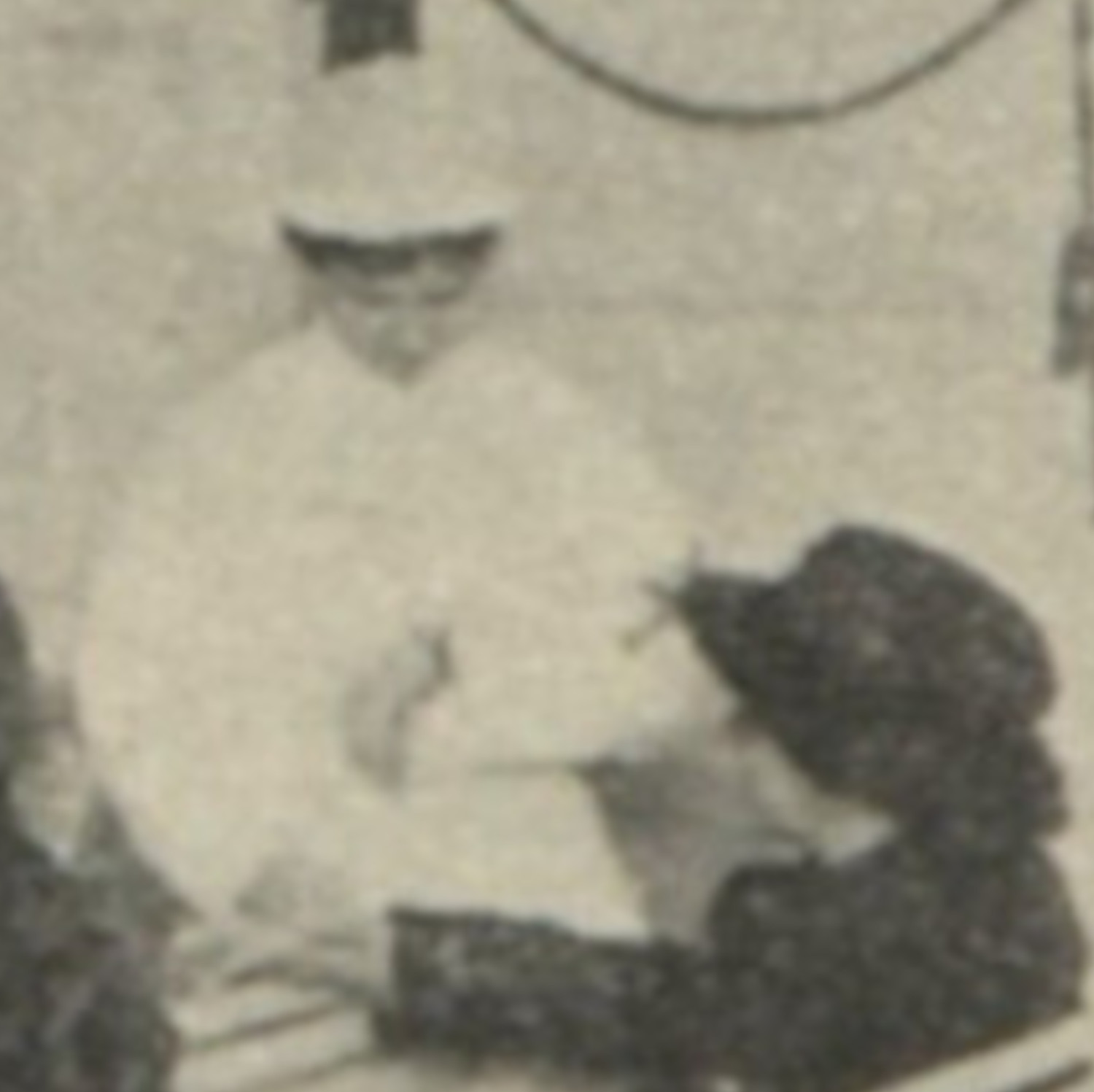
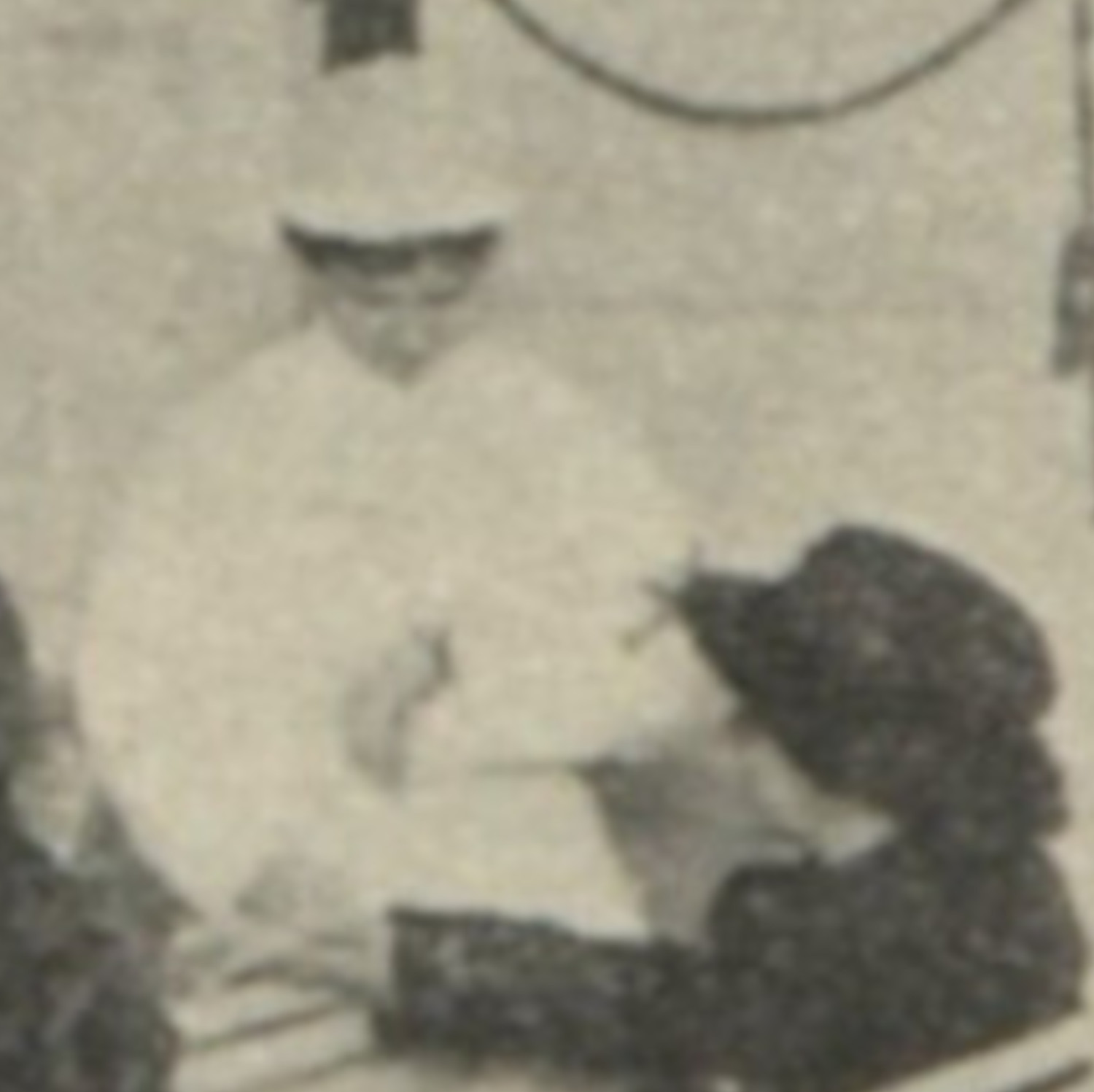
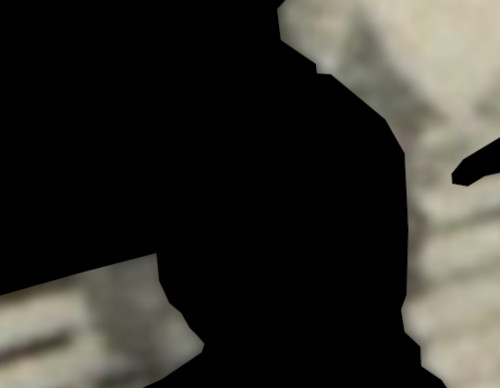
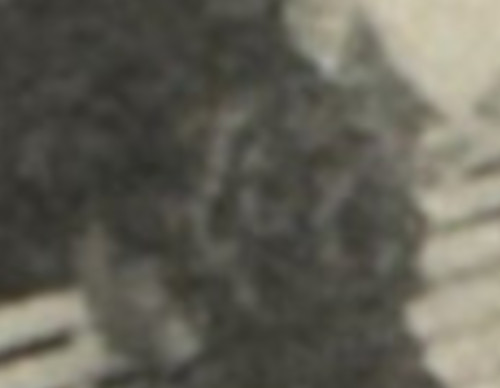
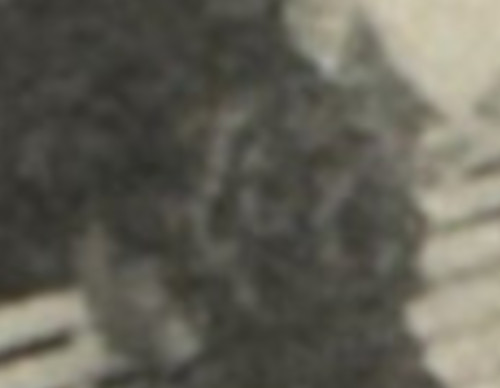
The fuzziness of what this woman appears to be doing helps me articulate a greater point to this hands-on work. Looking to the woman to the right of the nurse, where does her hand end (fig. 3)? Is she sitting waiting to be seen? Is she being examined by the nurse? The pixilation makes a definite read impossible, and as I work to make that woman’s body opaque, I have to make a decision about where her hand ends. These same questions can be asked of the patients on the left of this scene (fig. 4). Where do their bodies begin and end?
This fuzziness is at odds with the explicit goal of opacity: I want to scrub as much as I can of the material that is dependent on research subjects who did not consent. I also want to maintain the rest of the image, keeping all of the other material that might help my argument. Each opaquely produced image is its own assumption regarding the bodies of the patients. While this trips me up, it is secondary to the actual function of this practice: every time I get to make an image opaque is an opportunity to touch upon these patients and care for them (0.1.5; 2.1.4; 4.2.3). That care can bring with it a closer inspection of the elements that are not exploitative—the nurse’s face and body were not erased because she is a medical actor and was photographed as part of her job (3.3.3). This is a secondary benefit from the real goal, which is to confirm and attempt to repair a moment when something was stolen from a patient.
The reality of this process is that I spend a lot of time touching on—more specifically, clicking on—the bodies of these patients. Rather than just gazing upon them, these electronically mediated touches are a moment of connection. They let me say and enact a moment of recognition and reconciliation: I see you. You did not want to be here. I want to respect your right to privacy, to opacity (4.1.3).
These erasures are not moments of obliteration, but a communion with the past, acknowledging and addressing its injustices and imagining what could have been (4.2.1). This reflection can and should be extended back upon entire research projects, through the process of an ethics audit.
-
I switched platforms due to concerns about image privacy. Adobe changed its approach to image ownership on the platform because of its adoption of generative AI-based image generation. ↩
-
This framework was first presented at a conference in 2023. Before this, the boundaries for opacity were looser, but I felt it best to follow (at least loosely) the research practices of contemporary medical scholars.
Purcell, Sean. “Making the Patient Opaque: Loss as a Critical Methodology in the History of Medicine.” Presented at the First Forum, October 2023. https://tuberculosisspecimen.github.io/diss/2023/10/01/OpaquePatient.html.
One other decision I made early on was to completely omit the presence of children in the context of scientific research. I scrubbed them during the creation of the image data set (X.1.3), largely because they made me feel exceptionally uncomfortable, and also because they would not pass any muster for ethical treatment of childen. ↩
-
There is a slight limitation here, because the .pdf page does not correspond to the actual page in the book. Given the scale of the corpus and the number of images, it was too much work to change those numbers during data entry. ↩
-
The files provided to me by the New York Academy of Medicine’s Library followed a different naming structure, and I kept those files the same, so that they can be easily differentiated from the images in the corpus. ↩
-
For readers with web development savvy, an additional step was required to remove that pesky space that Adobe Acrobat generates when creating single files from a larger .pdf. I did a batch rename in the Apple finder to remove the space. ↩
-
Sometimes I write it, and sometimes I plop in the identifier and then copy and paste it ahead of an export. ↩
-
For code editing I usually use BBEdit. ↩
-
It is a bit more laborious to prepare the Word file for my committee, but that is not as important for the needs of most people using the OOPP. ↩
-
There is something interesting too about the close work of erasing bodies from the images. For pixilated images, there’s a specific kind of blur at the edges of shapes and figures which can make it difficult to discern where bodies begin and end. ↩
-
McMillan, Uri. “Introduction: Skin, Surface, Sensorium.” Women & Performance: A Journal of Feminist Theory, 2018, 1–15; Lafrance, Marc. “Skin Studies: Past, Present and Future.” Body & Society 24, no. 1–2 (2018): 3–32. ↩
-
Campt, Tina M. Listening to Images. Durham & London: Duke University Press, 2017. 90. ↩
-
Bruno, Giuliana. Surface: Matters of Aesthetics, Materiality, and Media. Chicago: University of Chicago Press, 2016; Mondloch, Kate. Screens: Viewing Media Installation Art. Minneapolis: University of Minnesota Press, 2010. ↩
-
I mention Rembrandt here for two reasons. First, his paintings have been subject to various iconoclastic attacks over their history. Second, his paintings were much more sculptural in their original form, where they could be “picked up by the nose”.
On attacks against The Night Watch: “Rembrandt’s ‘The Night Watch’ Slashed.” (New York: The New York Times, September 15, 1975); “Rembrandt’s ‘Night Watch’ Painting Vandalized : Artwork: Jobless Dutchman sprays chemical on painting; damage reported minimal.” (Los Angeles: The Los Angeles Times, April 6, 1990).
On Rembrandt’s sensorial paintings: Knox, Giles. Sense Knowledge and the Challenge of Italian Renaissance Art: El Greco, Velázquez, Rembrandt. Amsterdam: Amsterdam University Press, 2019.
On the differences between media objects: Hawkins, Joan. Cutting Edge: Art-Horror and the Horrific Avant-Garde. Minneapolis: University of Minnesota Press, 2000. ↩
-
Campt, Tina M. Listening to Images. 99. ↩
